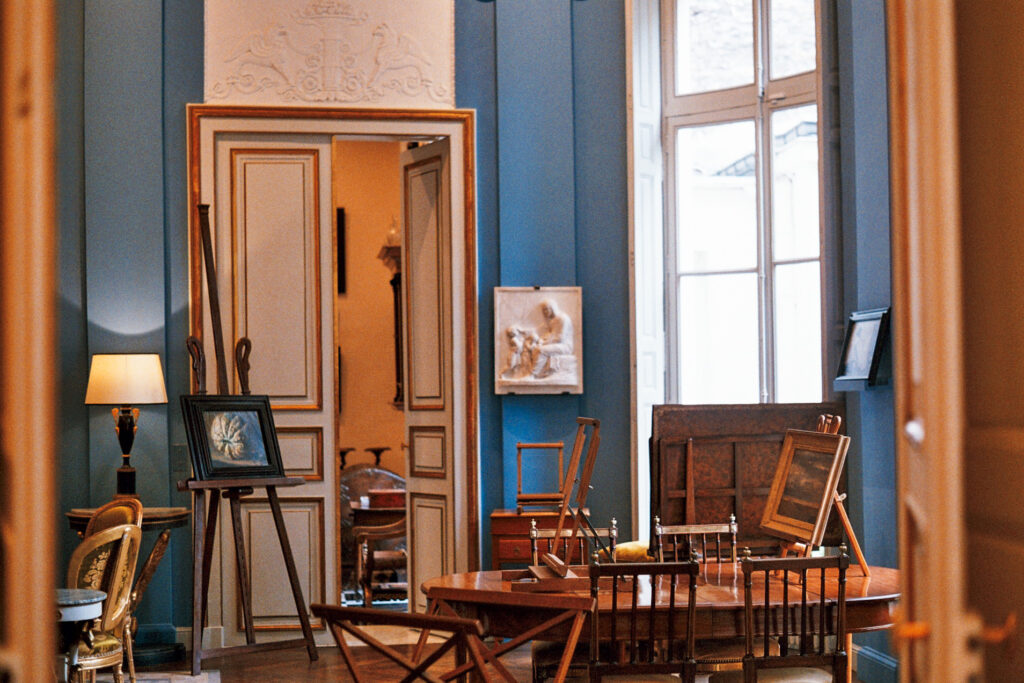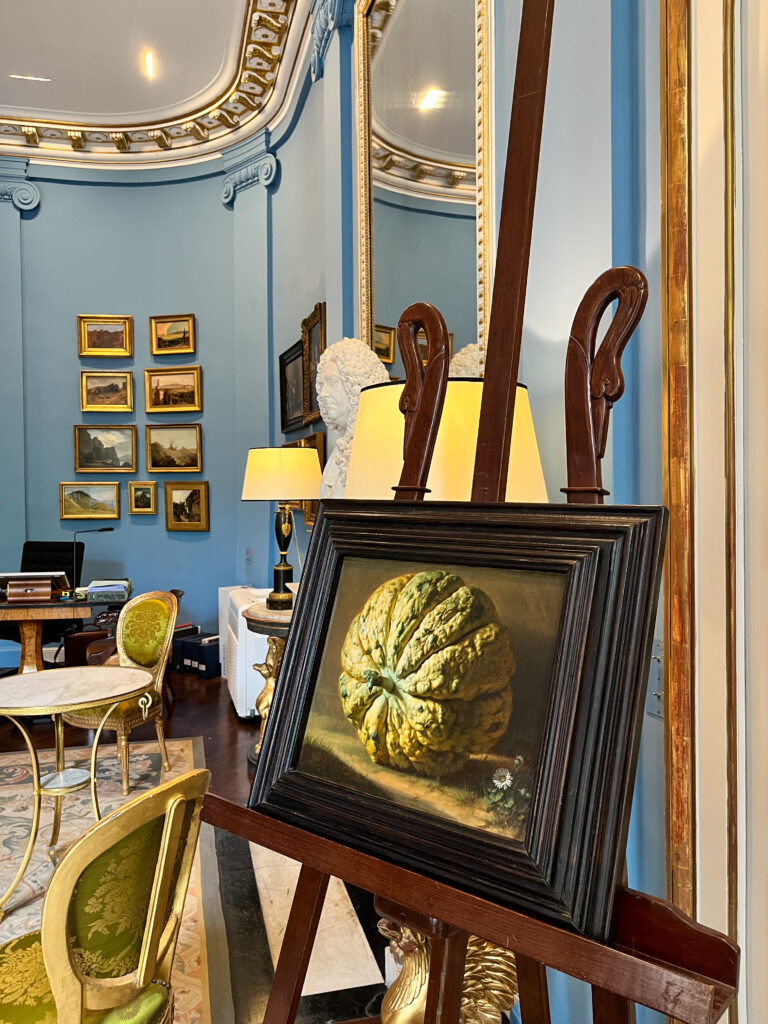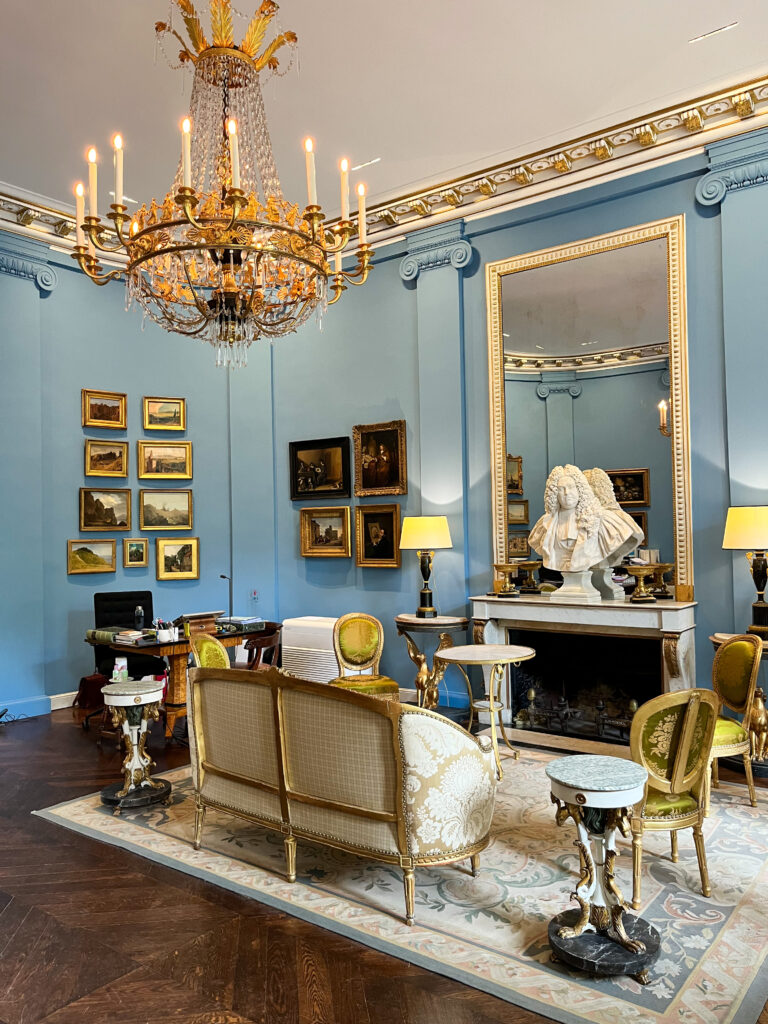Tour the Hôtel Turgot, an 18th-Century Treasure
In the heart of Paris’s 7th arrondissement—a stone’s throw away from the National Assembly—lies one of the city’s unique architectural gems. The Hôtel Turgot is an exquisite 18th-century townhouse named after Anne Robert Jacques Turgot, Baron de l’Aulne, who spent his final years there. The townhouse now serves as the offices of the Fondation Custodia.
In April Vendôme Circle members had the extraordinary opportunity to enjoy an exclusive tour, immersing themselves in the captivating allure of this historic townhouse and the exquisite collection it holds. Read on to discover highlights and enjoy a visual tour.
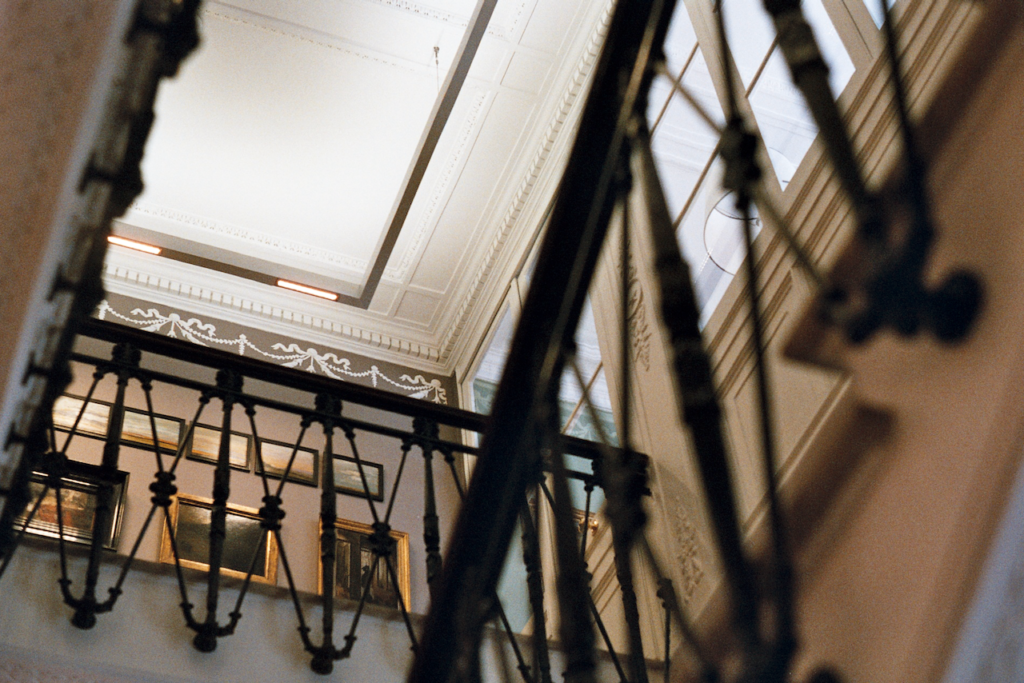
Truly a haven for art enthusiasts, the Fondation Custodia is the legacy of Frits Lugt and his wife, Jacoba Klever (known as ‘To’). Founded in 1947, it houses their collection as well as a centre for research. The 19th-century townhouse on the street is used for temporary exhibitions, while the Hôtel Turgot, accessible from the courtyard, generally remains closed to the public as it houses the foundation’s offices.
Experts in the art market and other specialists would quickly recognise the name of Frits Lugt, thanks to his many catalogs that remain of use to this day. To others, his name may be unfamiliar. So a very brief introduction is in order. Frits was born and grew up in Amsterdam. His passion for art became clear from an early age. As a child he would go to the Rijksmuseum and examine their collection of drawings. At the age of fifteen, he wrote a monograph on Rembrandt, one of his favourite artists. He began working for an auction house a year later.
When married, he and his wife—who shared his passion for collecting—traversed Europe in their search for works for their ever-growing collection. At the dawn of World War II, the couple left the Netherlands, feeling that an invasion was imminent. They took refuge in Switzerland and stored their collection there or with fellow collectors. In 1941 they rolled up their drawings and headed to the US via the port of Lisbon after crossing through the French free zone and a devastated Spain. The war over, they returned to Europe in 1945, painstakingly reconstituted their collection and, in 1947, opened their foundation in the two townhouses on Rue de Lille in Paris.
Now to the Hôtel Turgot. The courtyard is, like so many such courtyards in Paris, a shelter from the bustle of the city and an antechamber to the privacy of hidden-away homes. This courtyard is even more special, as it is entirely private and is the path to a unique world, one suspended in time. Do not forget to take note of the tulips—a reminder of the Foundation’s origins and current ties to the Netherlands.
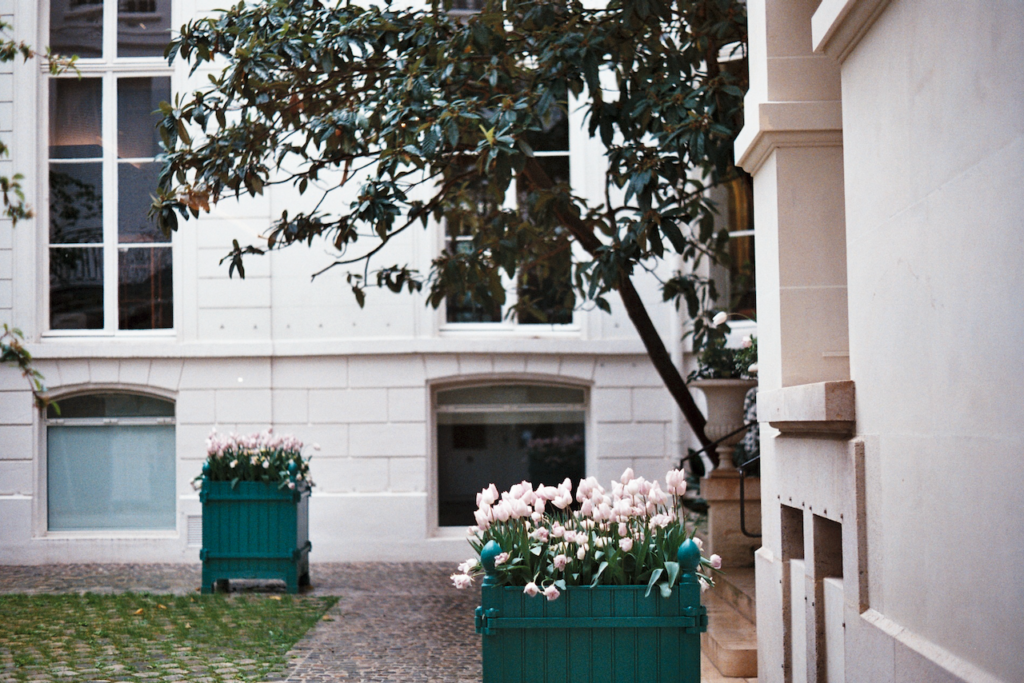
The entrance hall and staircase is absolutely stunning. The choice was made here to hang the many, lovely landscape paintings in the earlier, more traditional fashion. A bust of Turgot reminds us that the onetime Secretary of State of the Navy, Controller-General, economist and author of Reflections on the Production and Distribution of Wealth once lived here.
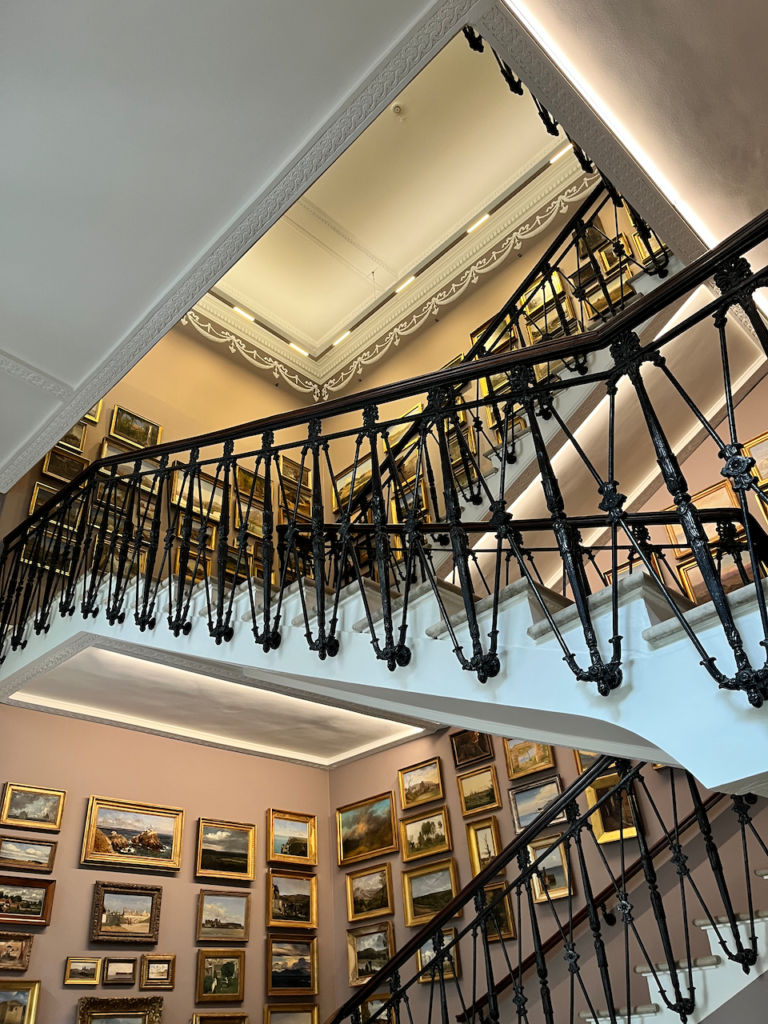
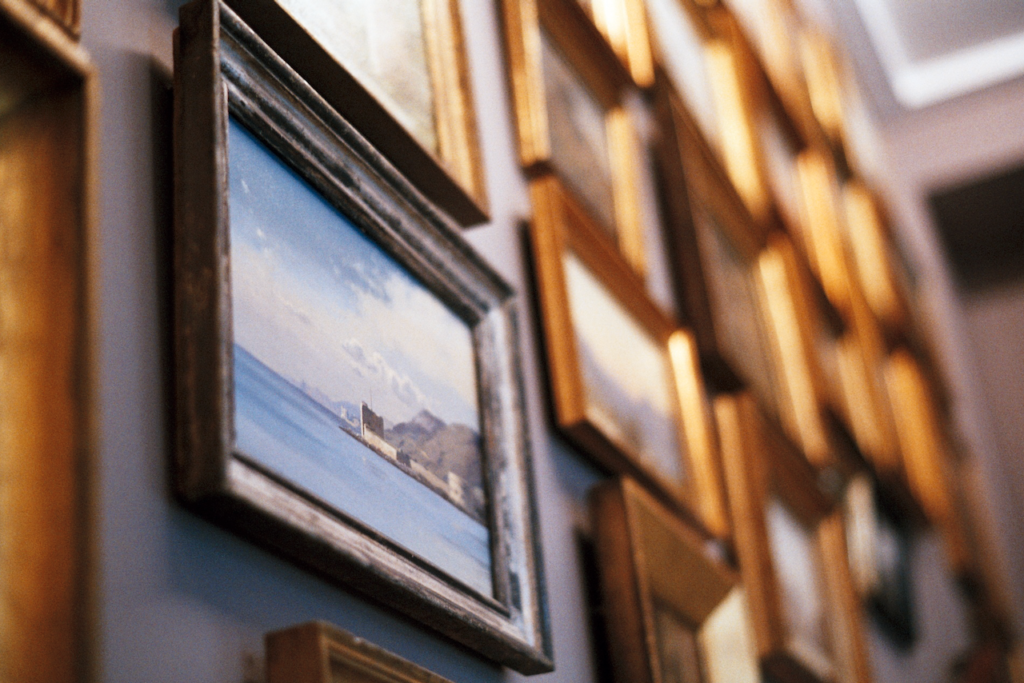
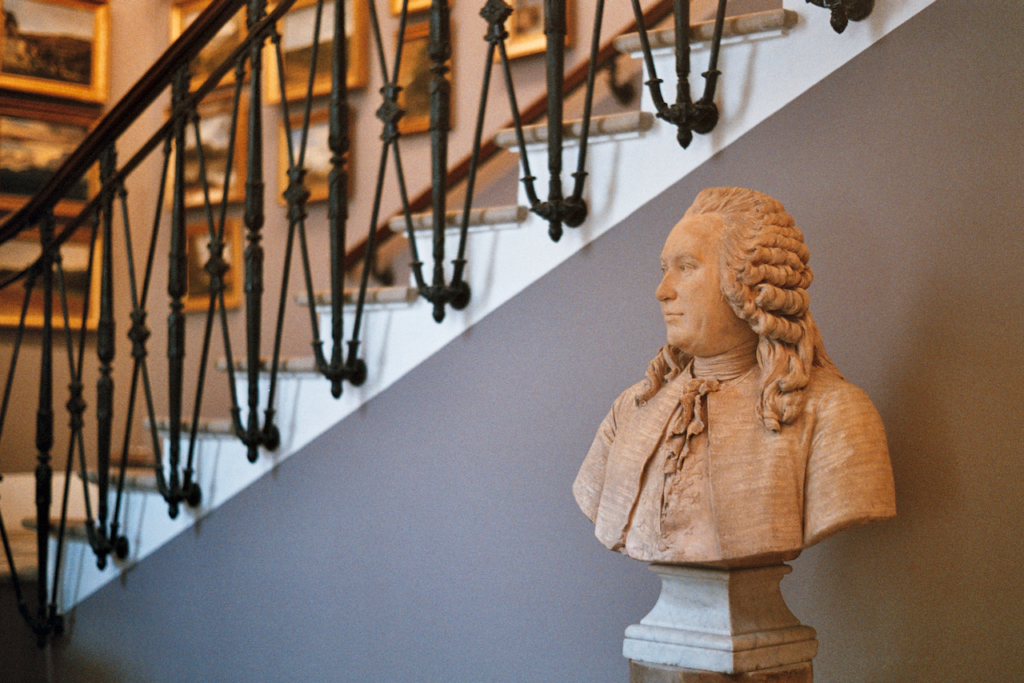
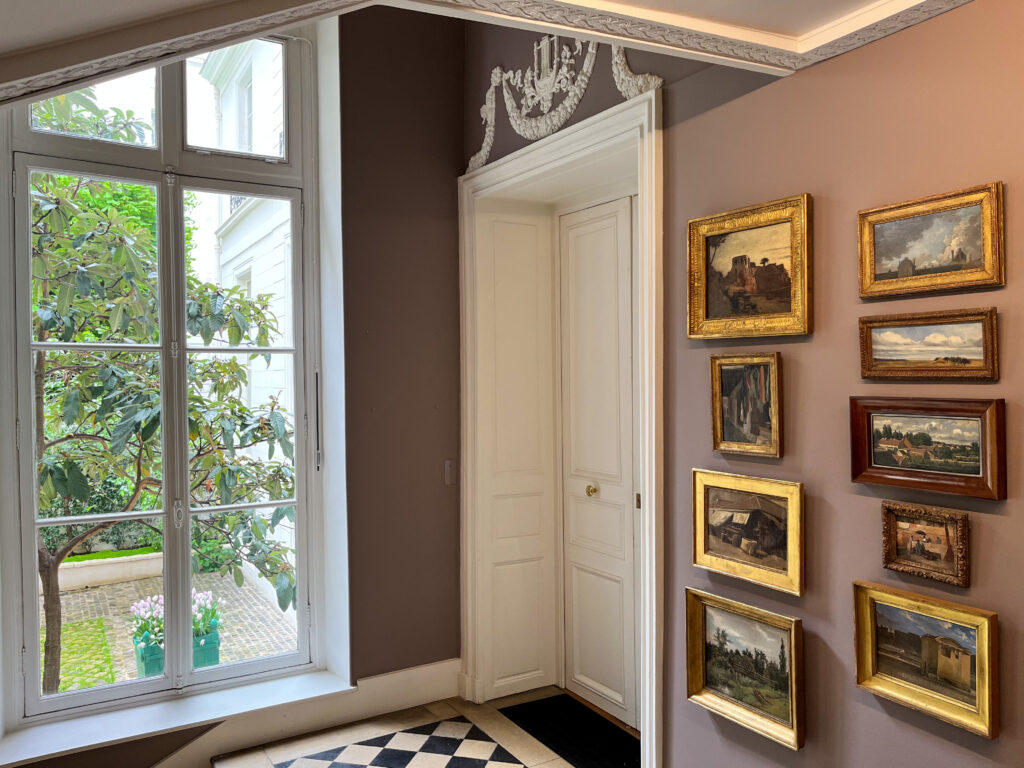
As we stepped into the suite of rooms that form the heart of the foundation, we discovered more of the thousands of artworks that belong to the collection. Some of them were displayed on a pair of beautiful architect’s tables. Other—even more beautiful—furniture awaited us as we continued our visit.

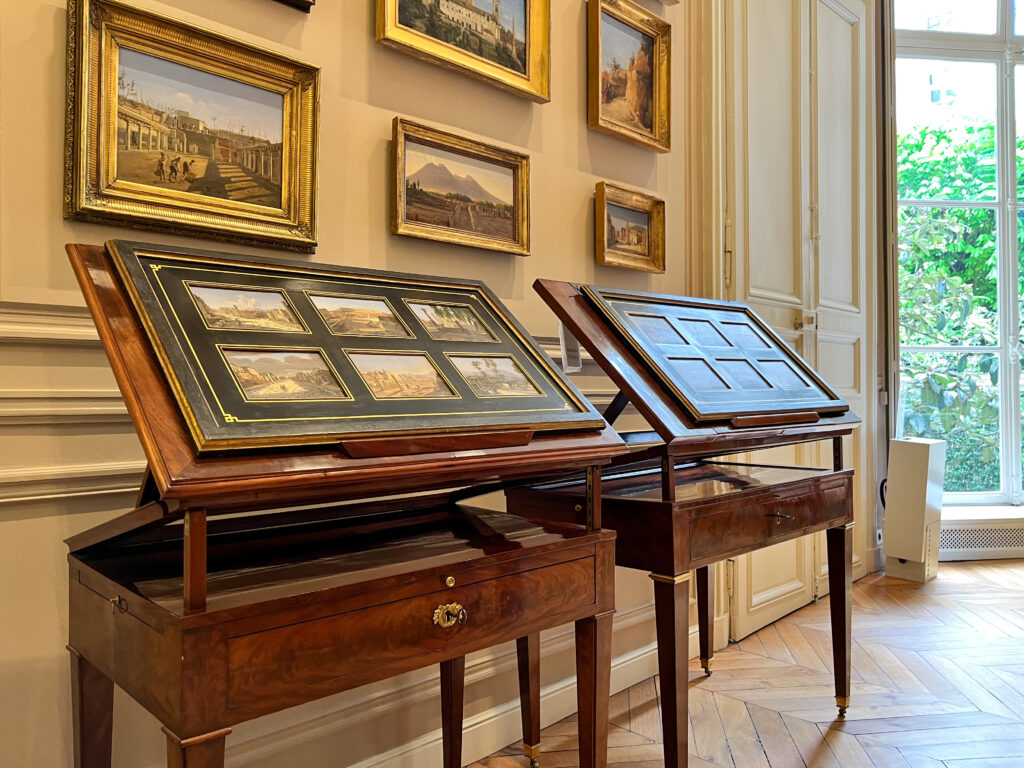

Here you have a glimpse into the dining room—where we finished our visit over a cup of coffee.
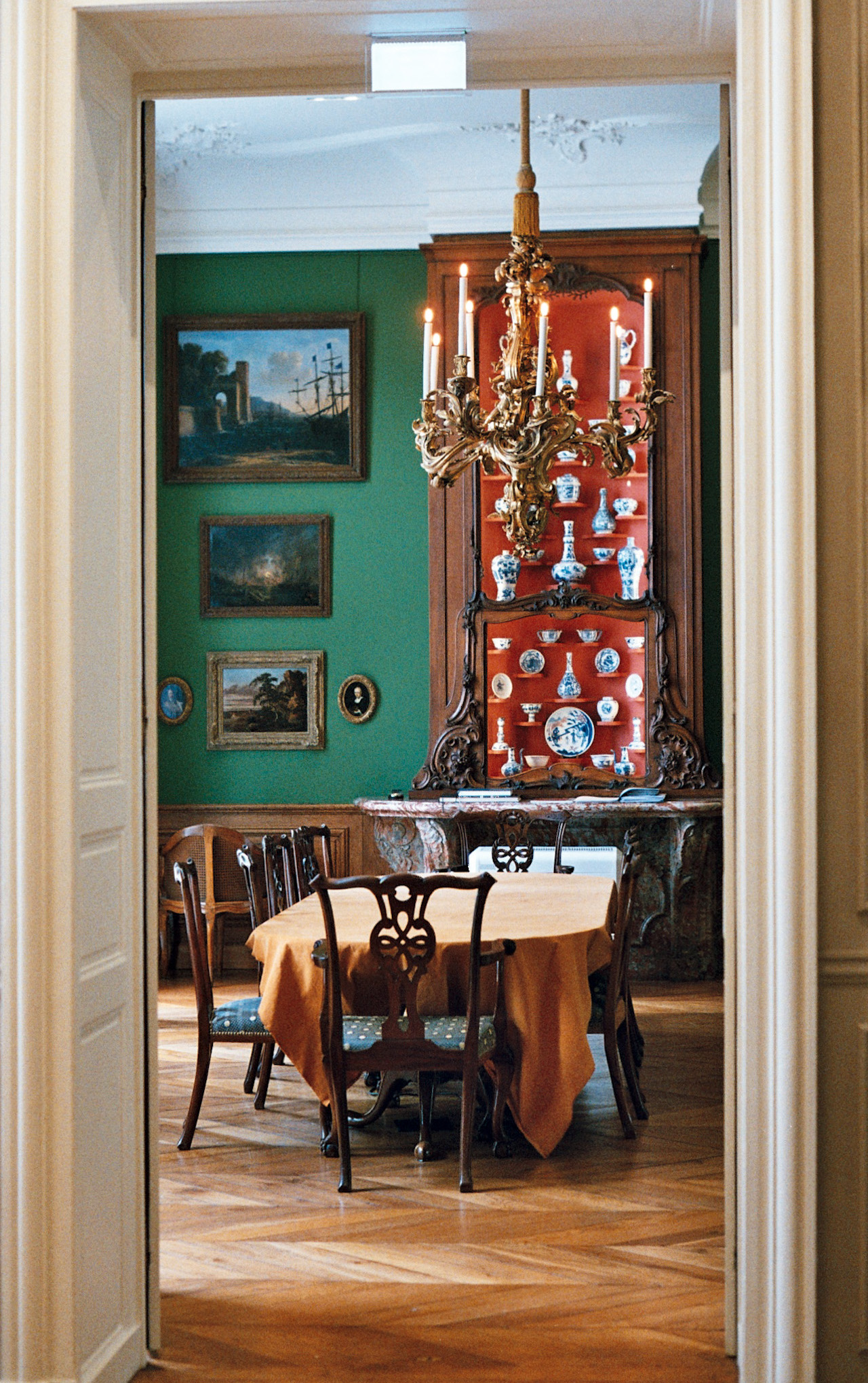
From the dining room one looks into the great drawing room, freshly painted in a charming blue hue. More photos below!
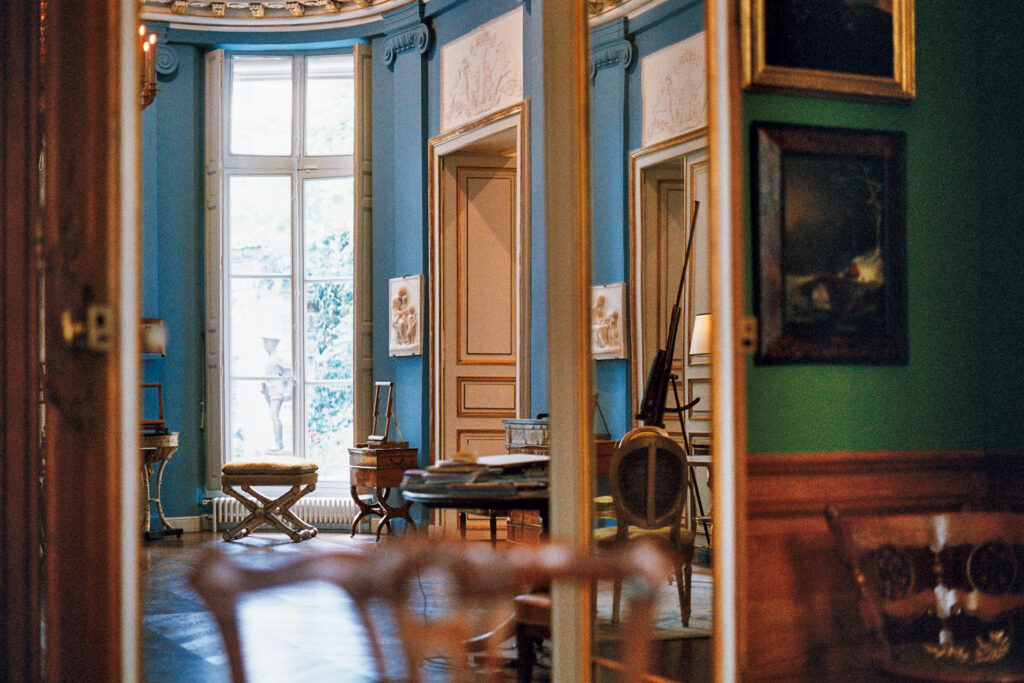
As we were small in number, our guide was able to bring us into smaller spaces, often kept closed even during the occasional guided tour.
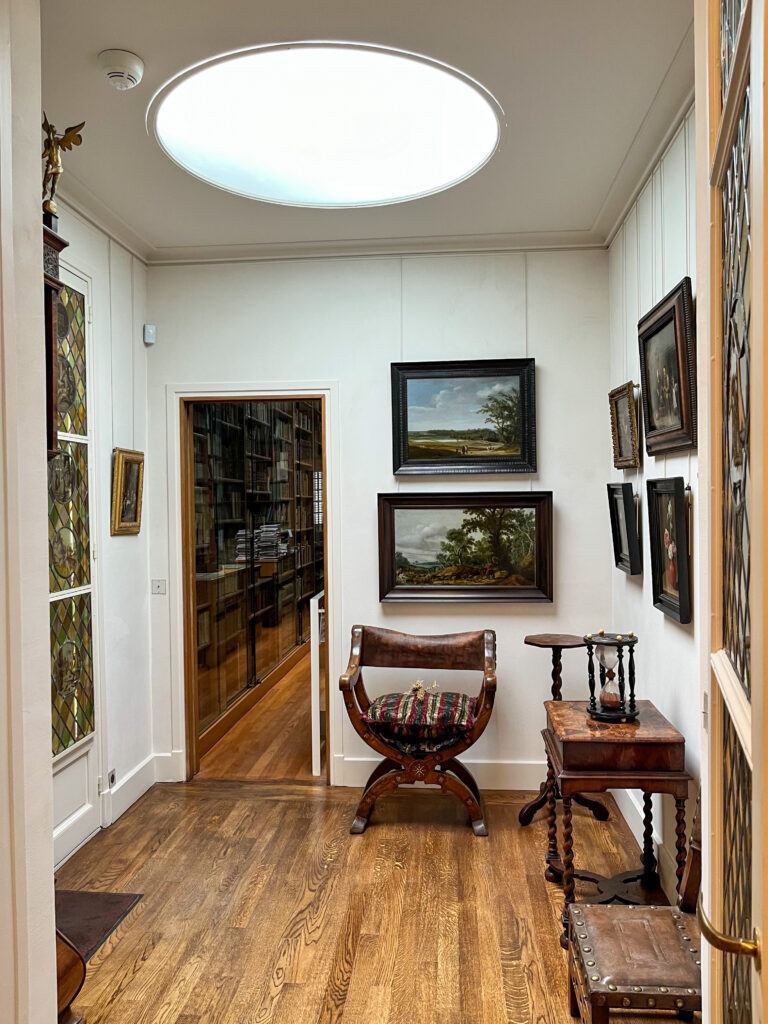
Just off of the great drawing room is a beautifully reconstructed 17th-century Dutch room. Notice the tiles of the fireplace and the beautiful chandelier. We also were able to admire some fine examples of 17th-century Delftware including a strainer in perfect condition.
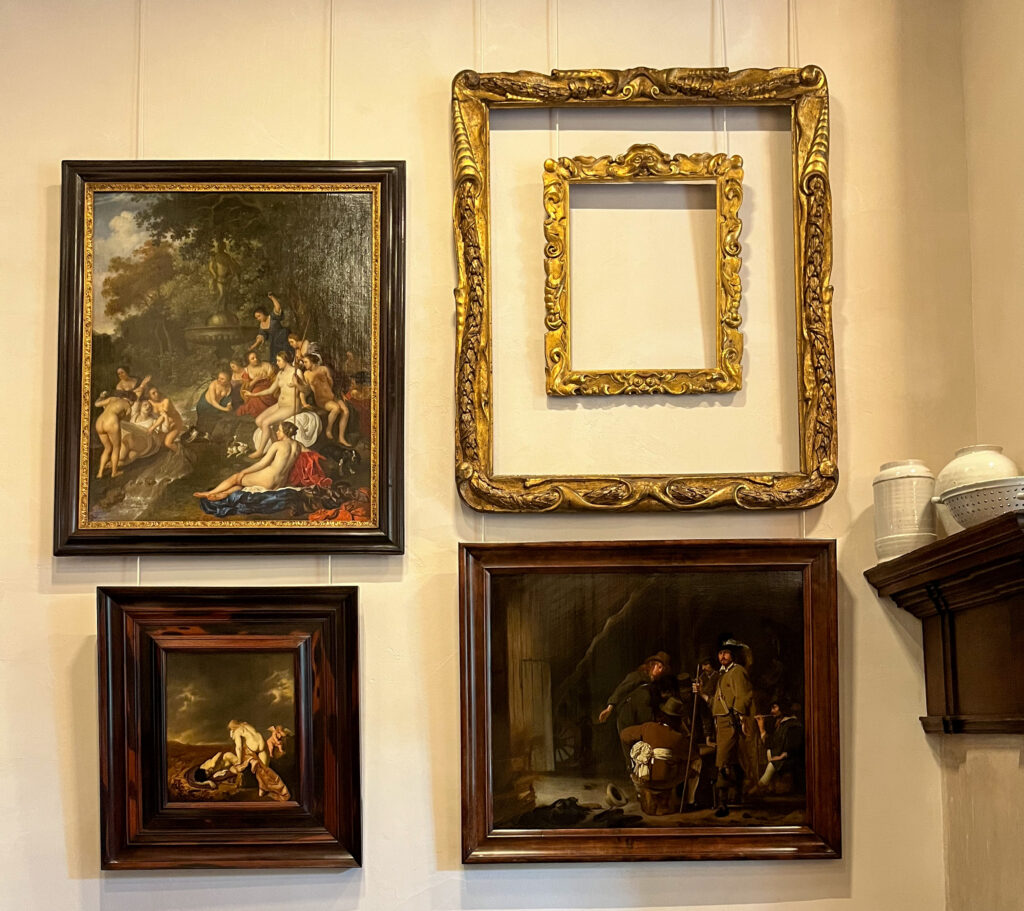
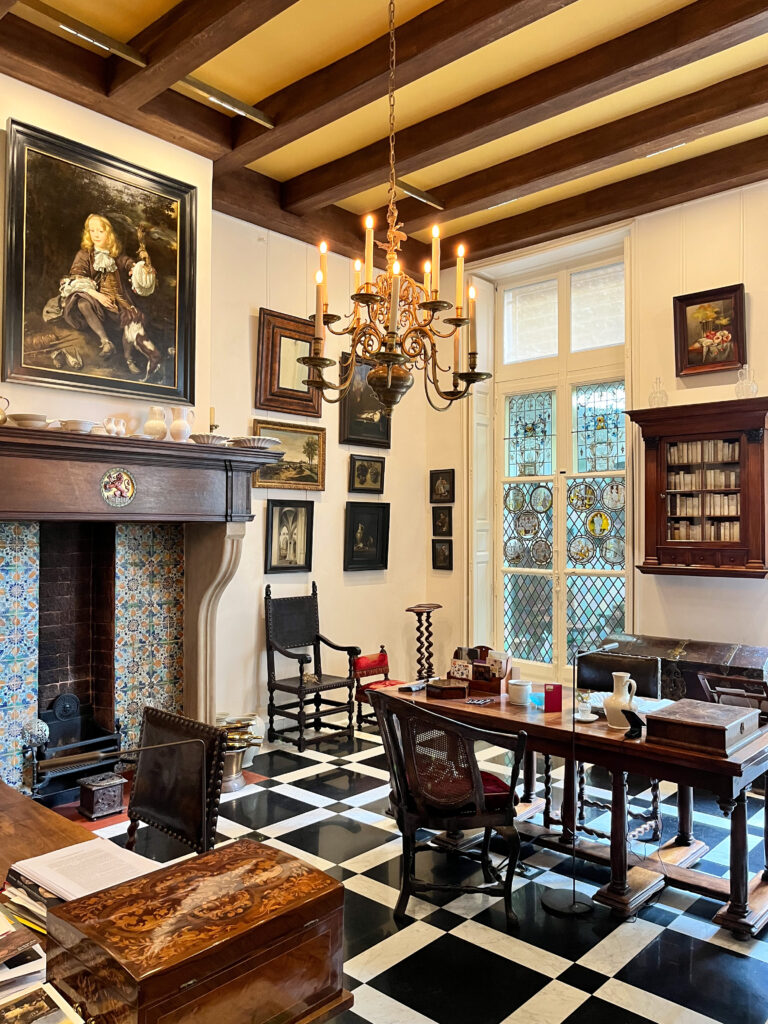
Last, but perhaps one of our absolute favourites, is the great drawing room. The colour of the walls stands out from the customary white Parisian walls and the combination of furniture from disparate periods comes together as a harmonious whole. The Empire-style swan easel is particularly noteworthy in that regard.
